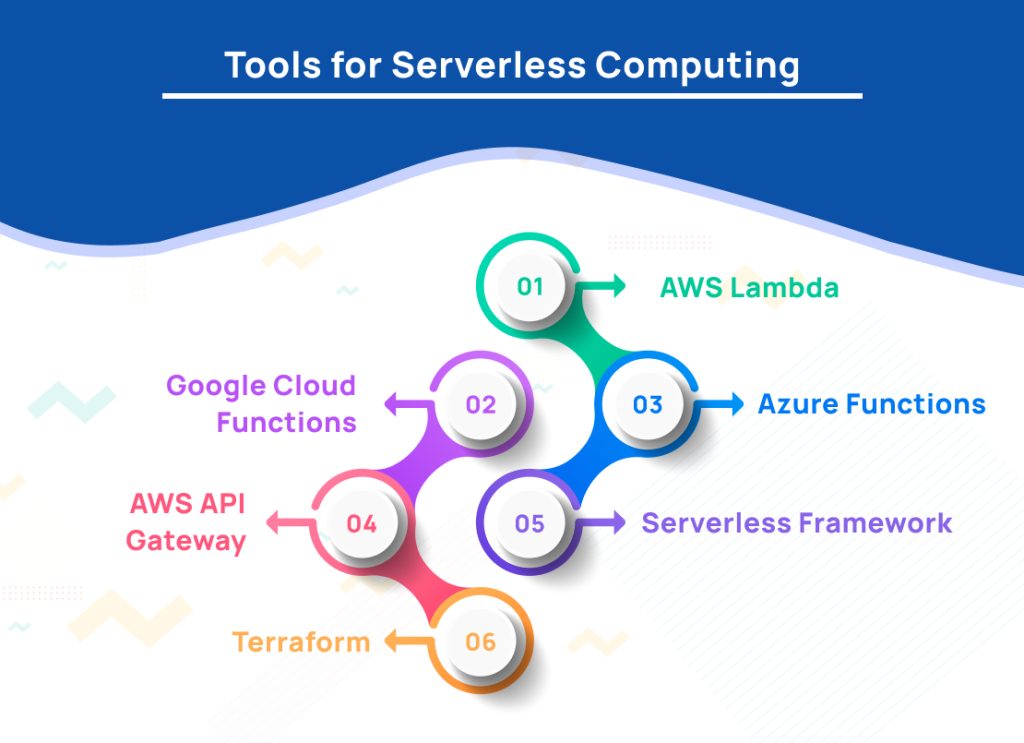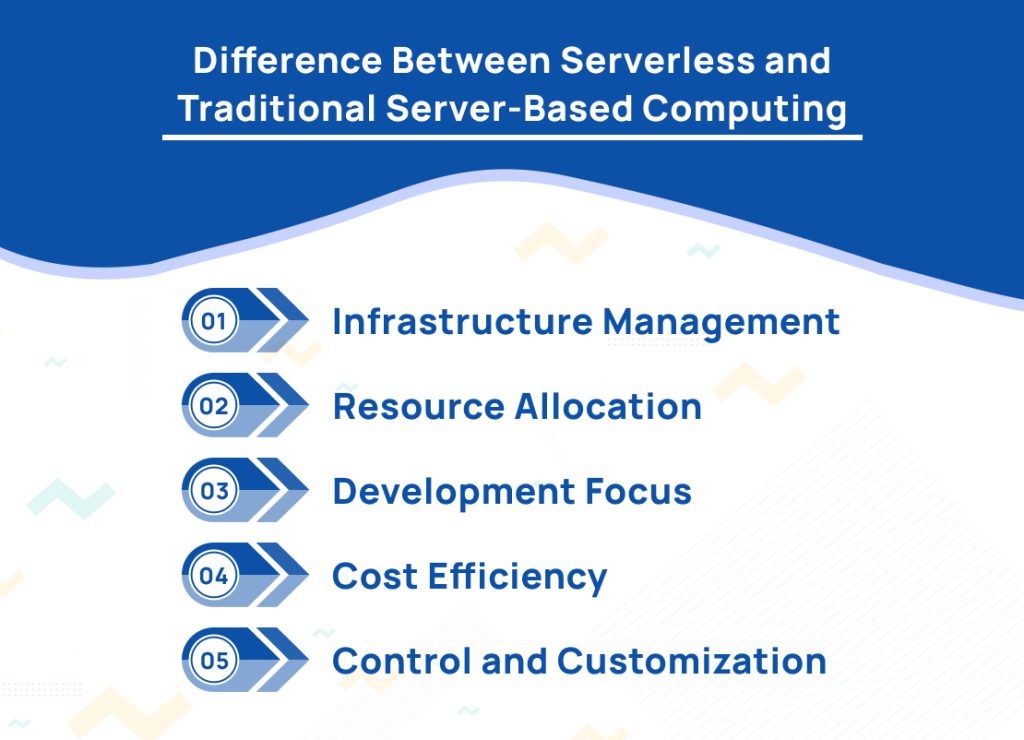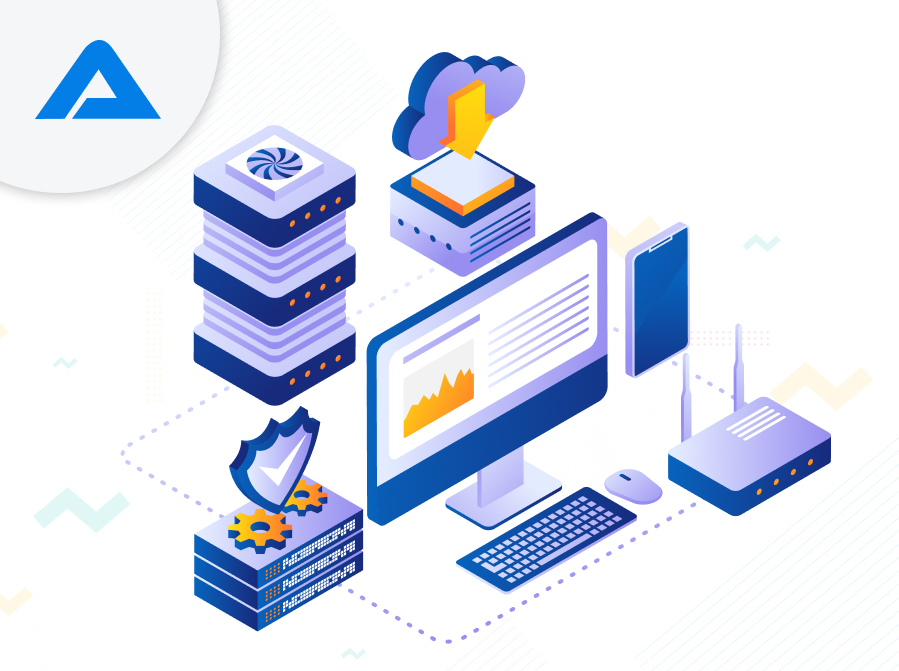In today’s evolving cloud landscape, there’s a move towards a cutting-edge solution known as serverless computing, surpassing traditional cloud services. Unlike traditional methods where businesses manage servers directly, serverless computing enables companies to run complete applications effortlessly through APIs. This innovative approach empowers organizations to prioritize developing valuable functions and features, removing the usual cost and effort hurdles associated with IT transformations.
Embracing serverless architecture allows businesses to transition their IT spending from capital to operational expenses throughout the application development lifecycle. This shift can lead to significant cost savings of approximately 60%.
Moreover, serverless architecture offers substantial advantages for companies seeking to scale and support digital transformations. It builds upon the benefits of traditional cloud services while offering additional functionalities.
According to Verified Market Research, the Serverless Architecture Market was valued at USD 8.93 Billion in 2022 and is expected to reach USD 55.24 Billion by 2030, with a Compound Annual Growth Rate (CAGR) of 22.45% from 2023 to 2030. This growth is fueled by adopting serverless architecture, offering scalability, cost efficiency, and reduced operational burdens. While serverless architecture has been around for over a decade, Amazon transformed the concept by introducing AWS Lambda in 2014.
Amazon Web Services (AWS) Lambda quickly gained popularity among developers and remains a top choice for building serverless applications. Other major cloud service providers, including Google and Microsoft, offer Function-as-a-service (FaaS) solutions, such as Google Cloud Functions (GCF) and Azure Functions.
Serverless Computing- Overview
Imagine having a magic button that lets you run your software without worrying about managing servers. That’s what serverless computing is all about! Instead of spending time and effort setting up and maintaining servers, you can focus on writing code and building your applications.
In simple terms, serverless computing allows you to run your code in response to events or triggers, like user actions or data changes, without worrying about the underlying infrastructure. It’s like having a team of invisible helpers handle your server stuff.
The best part? You only pay for the computing resources you use rather than for servers that sit idle most of the time. This makes serverless computing super cost-effective and efficient for businesses of all sizes.
So, whether you’re a small startup or a big corporation, serverless computing lets you focus on what you do best – building awesome software and delighting your users – without getting bogged down by server management hassles. It’s like having your own personal IT genie!
Advantages of Serverless Computing
Serverless computing brings numerous advantages to businesses, helping them thrive in a dynamic market landscape. The popularity of serverless computing among developers stems from several compelling reasons.
Here are some key benefits of embracing serverless computing:
- Auto-scaling: Serverless applications have the remarkable ability to scale automatically in response to unexpected spikes in traffic. This eliminates manual intervention, saving valuable time and resources typically spent managing infrastructure. With auto-scaling, your application can effortlessly handle surges in traffic while maintaining responsiveness.
- Pay-per-Use Model: Embracing a pay-per-use model ensures that you only pay for your application’s computing resources while running. This model is incredibly cost-efficient compared to traditional server-based solutions, as you’re not burdened with the costs of idle resources. With pay-per-use, you enjoy cost savings without worrying about wasted resources.
- Faster Time to Market: By eliminating the complexity of managing servers, serverless computing allows developers to focus their efforts on code development. This streamlined approach accelerates the time it takes for new applications to reach the market, providing your organization a competitive advantage. With serverless computing, you can swiftly deliver innovative solutions to meet evolving market demands.
- Reduced Operational Overhead: With serverless computing, cloud providers take on the responsibility of managing the underlying infrastructure. This significantly lowers operational expenses and simplifies application management for developers. By alleviating the burden of infrastructure management, your team can devote more time and resources to driving innovation rather than managing infrastructure.
- Language and Framework Flexibility: Serverless computing offers extensive support for multiple programming languages and frameworks. This flexibility empowers businesses to choose the tools and languages that best align with their needs and preferences. Whether Python, JavaScript, or another language, serverless computing enables you to work with the tools and languages that complement your project goals and your team’s expertise.
Tools for Serverless Computing

Let’s explore the world of serverless computing tools in a friendly and accessible way:
Serverless computing tools are like a magic wand for developers, simplifying the process of building and managing applications without worrying about servers. They provide everything developers need to create powerful and scalable applications without the headache of infrastructure management.
Here are some popular tools for serverless computing:
AWS Lambda:
AWS Lambda is like your own personal coding assistant in the cloud. It allows you to run your code without worrying about servers – upload your code and let Lambda handle the rest. Whether building a website, processing data, or creating backend services, Lambda can execute your code in response to events like website clicks, file uploads, or database changes. It’s perfect for building scalable and cost-effective applications, as you only pay for the compute time you use. With AWS Lambda, you can focus on writing code and building awesome applications without getting bogged down by server management tasks.
Azure Functions:
Azure Functions are a key component of Microsoft’s serverless computing offering, allowing developers to build and deploy event-driven, scalable applications without the need to manage infrastructure. As a leading tool in the realm of serverless computing, Azure Functions enable seamless integration with other Azure services, offering flexibility and ease of use. With the support of an Azure consultant, businesses can leverage Azure Functions to develop efficient, cost-effective solutions tailored to their specific needs. These consultants provide valuable expertise and guidance in architecting, implementing, and optimizing Azure Functions, ensuring businesses can harness the full potential of serverless computing to drive innovation and growth.
Google Cloud Functions:
Google Cloud Functions is like having a supercharged toolbox for building serverless applications. It’s a serverless computing service offered by Google Cloud Platform that allows developers to write and deploy code without worrying about servers. With Google Cloud Functions, you can create small, single-purpose functions that respond to events like changes in data, incoming HTTP requests, or file uploads. It’s perfect for building lightweight, event-driven applications that scale effortlessly and respond to real-time changes. Google Cloud Functions supports multiple programming languages, including JavaScript, Python, and Go, making it accessible to developers with different skill sets. With Google Cloud Functions, you can focus on writing code and building innovative solutions without the hassle of managing infrastructure.
Serverless Framework:
The Serverless Framework is like having a powerful Swiss army knife for building serverless applications. It’s an open-source toolkit that simplifies deploying and managing serverless applications across different cloud providers. With the Serverless Framework, you can write code in your favorite programming language and quickly deploy it to platforms like AWS Lambda, Azure Functions, and Google Cloud Functions. It provides a user-friendly Command Line Interface (CLI), configuration files, and plugins to streamline your development workflow. The Serverless Framework abstracts away the complexity of infrastructure management, allowing you to focus on writing code and building innovative solutions. Whether you’re a beginner or an experienced developer, the Serverless Framework makes it easy to build and deploy serverless applications confidently.
AWS API Gateway:
AWS API Gateway is like your personal traffic controller for serverless applications. It’s a fully managed service provided by Amazon Web Services (AWS) that allows you to create, publish, maintain, and secure APIs at any scale. With AWS API Gateway, you can easily build RESTful APIs that connect your serverless functions to the outside world. It’s perfect for building scalable and secure APIs that power your applications, whether you’re building a mobile app, a web service, or a backend system. AWS API Gateway integrates seamlessly with other AWS services, making building robust and reliable serverless applications easy. With AWS API Gateway, you can focus on building great applications without worrying about the underlying infrastructure.
Terraform:
Terraform is like the blueprint designer for your serverless infrastructure. It’s an open-source infrastructure-as-code tool that simplifies the process of provisioning and managing cloud resources. With Terraform, you can define your entire serverless environment using simple configuration files, allowing you to spin up and tear down resources as needed easily. Whether you’re deploying functions to AWS Lambda, Azure Functions, or Google Cloud Functions, Terraform consultant provides a consistent and reliable way to manage your infrastructure. It’s perfect for teams that want to automate their deployment workflows and ensure consistency across different environments. With the help of Terraform consultant, you can easily build and manage your serverless applications, knowing that your infrastructure is in good hands.
These serverless computing tools make it easy for developers to build and deploy applications quickly and efficiently without the overhead of managing servers. With these tools, you can focus on writing code and creating excellent applications that delight your users.
How Does Serverless Computing Work?
In a serverless architecture, developers are relieved of the burden of managing infrastructure and can solely focus on writing and deploying their code. The cloud provider handles all the backend operations, including resource provisioning and execution. When a user interacts with the application, the cloud provider dynamically allocates the required resources, executes the code, and bills the user based on resource consumption. This approach is particularly advantageous for applications experiencing unpredictable or fluctuating traffic patterns, as developers only pay for the resources they use rather than maintaining idle servers.
Serverless computing is commonly integrated with Function-as-a-Service (FaaS) platforms like AWS Lambda, Azure Functions, or Google Cloud Functions. These platforms enable developers to create modular functions, which are small, self-contained units of code designed to perform specific tasks. Various events, such as user actions like file uploads or database updates, can trigger these functions. Furthermore, developers have the flexibility to write these functions in multiple programming languages, catering to their preferences and project requirements.

Difference Between Serverless and Traditional Server-Based Computing

Here’s the breakdown of the distinctions between serverless and traditional server-based computing in a user-friendly and highly readable format:
Infrastructure Management:
Serverless: You focus solely on writing and deploying code. The cloud provider handles all the backend tasks, like resource provisioning and scaling, letting you focus on coding.
Traditional Server-Based: You’re responsible for managing servers and infrastructure. This includes tasks such as provisioning servers, configuring networking, ensuring high availability, and adding complexity to your workload.
Resource Allocation:
Serverless: Resources scale automatically based on demand. You only pay for what you use, and the system adjusts to changes in traffic without manual intervention.
Traditional Server-Based: You manually allocate resources based on expected traffic. This can lead to over-provisioning during peak periods and under-utilization during off-peak times, resulting in wasted resources and higher costs.
Development Focus:
Serverless: You can focus entirely on writing and deploying code. With infrastructure management abstracted away, you can iterate quickly, speed up development cycles, and introduce new features faster.
Traditional Server-Based: You must focus on writing code and managing infrastructure. This can slow development cycles and add complexity as you troubleshoot and maintain server configurations.
Cost Efficiency:
Serverless: You’re charged only for resources consumed during code execution. There are no upfront costs or charges for idle resources, making serverless computing cost-effective for applications with fluctuating traffic.
Traditional Server-Based: Costs can be higher due to over-provisioning resources to handle peak loads. Ongoing maintenance and management expenses also contribute to overall operating costs.
Control and Customization:
Serverless: While simple and easy to use, serverless computing may limit control and customization options compared to traditional server-based computing.
Traditional Server-Based: You have greater control and customization options, allowing you to fine-tune infrastructure settings to meet specific requirements.
Challenges and Considerations of Serverless Computing
In recent years, serverless computing has emerged as a game-changer in the tech landscape, offering unparalleled scalability and cost-effectiveness. However, like any technology, it comes with its own set of challenges and considerations. Let’s delve into some of the key hurdles you may encounter along the way:
1. Cold Starts:
Challenge: Picture this: You click a button on your app, and nothing happens for a few seconds. That’s a cold start, where serverless functions experience delays in response time, especially when starting from an idle state.
Consideration: To tackle this, developers can optimize functions to minimize idle time and keep functions warm by scheduling periodic invocations.
2. Limited Execution Time:
Challenge: Serverless platforms often impose time limits on function execution, posing constraints for tasks requiring extended processing periods.
Consideration: To overcome this hurdle, it’s crucial to design functions with time constraints in mind, breaking down longer tasks into smaller, more manageable units.
3. Vendor Lock-In:
Challenge: Choosing a specific serverless platform may lead to vendor lock-in, making it challenging to switch to alternative platforms.
Consideration: Mitigating this risk involves evaluating vendor lock-in concerns and exploring strategies like abstraction layers or multi-cloud architectures.
4. Debugging and Monitoring:
Challenge: Debugging serverless applications can be like navigating a maze; real-time monitoring is crucial for identifying and resolving performance issues.
Consideration: Implementing robust logging, monitoring, and tracing mechanisms can enhance visibility into function executions and streamline troubleshooting processes.
5. Security and Compliance:
Challenge: Protecting sensitive data and ensuring compliance with regulatory requirements are paramount in serverless environments.
Consideration: Strengthening security measures through encryption, access controls, and regular audits can safeguard serverless applications and ensure compliance.
6. Resource Scaling:
Challenge: While auto-scaling is a boon, it can lead to unexpected costs if not managed effectively.
Consideration: Monitoring resource utilization, optimizing function performance, and leveraging cost-effective pricing models are essential for controlling expenses and maximizing cost efficiency.
By addressing these challenges and considerations head-on, developers can confidently navigate the complexities of serverless computing, unlocking its full potential to drive innovation and scalability in the digital realm.
Conclusion
Serverless computing marks a notable change in our application development and infrastructure handling approach. While it may not be suitable for all computing scenarios, it offers companies access to compelling benefits, making it an appealing choice for numerous applications. As we progress towards a more distributed world, the significance of comprehending and utilizing serverless computing will undoubtedly increase.

Embrace the Power of the Cloud Today and Elevate Your Operations to New Heights!

Pooja Upadhyay
Director Of People Operations & Client Relations

